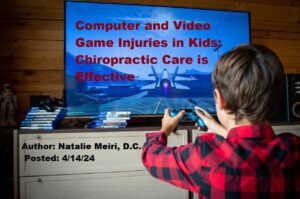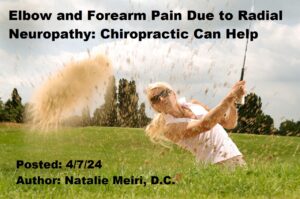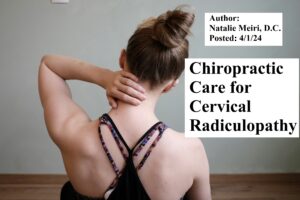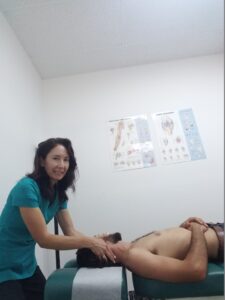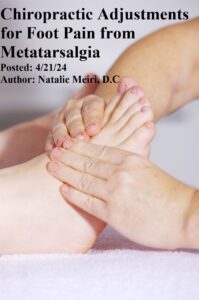
From Dr. Natalie Meiri’s Clinical Pearl Stories:
Chiropractic Adjustments for Foot Pain from Metatarsalgia
This was a 45 year old patient who had a chief complaint of pain on the bottom of the foot, specifically at the sole. To be HIPAA compliant, I will call her Beatrice instead of her real name. Beatrice had treated with another chiropractor prior to seeing me. She had foot problems he wouldn’t address. He would only work on her spinal complaints.
Beatrice’s History
Beatrice worked all day on her painful feet. Moreover, she didn’t know how she developed this problem. There was no trauma. Beatrice went to a podiatrist with no relief. He told her she had metatarsalgia.
However, the podiatrist did tell her the culprit could be the improper shoes she often wore. Beatrice’s high heels transferred extra weight to the front of her feet. And this could have caused metatarsalgia. Beatrice also wore shoes with a narrow toe box.
Beatrice started wearing athletic shoes with a lot of support and padding, but her feet continued to hurt. Even the orthotics she got at the podiatrist didn’t help. She didn’t want a cortisone shot or surgery. The podiatrist had prescribed NSAIDS (Non-steroidal anti-inflammatory drugs) which gave her very little relief.
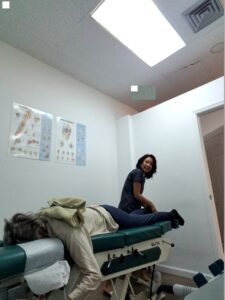
What is Metatarsalgia?
Metatarsalgia is defined as pain and inflammation in the ball of the foot. It can have varied causes. Typically, the pain is experienced in the padding directly below the toes. The metatarsals are the five long bones in the midfoot. They are located between the tarsal bones and the phalanges.
Metatarsalgia pain can consist of numbness, shooting pain, and/or soreness, especially when flexing the toes. Indeed, injuries to the balls of feet are common in athletes. Also, metatarsalgia is a repetitive injury. It is prevalent in those who spend a lot of time on their feet. Metatarsalgia is a very common foot problem.
Causes of Metatarsalgia
There are a lot of reasons for Metatarsalgia. Some may be related to gait mechanics (how you walk), foot anatomy, and/or foot and ankle deformity/malformation (e.g. hammer toes, pes planus (low arch) or pes cavus (high arch).
Furthermore, chronic stretching of the transverse ligaments may be an underlying reason. These ligaments run across and connect together the heads of all the metatarsal bones.
Firstly, excessive weight or repetitive activity may injure these ligaments. Secondly, direct trauma from jumping or landing on the toes with running or jogging can be a cause. Thirdly, standing for long periods of time in high-heeled shoes is definitely a contributing factor. Fourthly, shoes with too narrow a toe box will also cause compression and pain. Lastly, your feet may have a chiropractic subluxation of the metatarsal heads.
Beatrice’s Examination and Imaging
Upon examination, there were positive tests for Beatrice’s feet for Metatarsalgia. The x-rays she brought in from her podiatrist’s office showed degenerative osteoarthritis of both her feet.
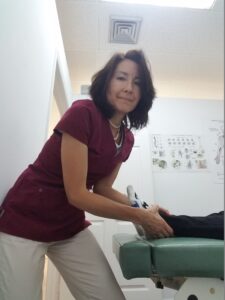
Beatrice’s Treatment
Beatrice was given instructions on the use of a metatarsal pad placed just proximal (next) to the metatarsal heads. And room was left after placement of the pad for the first and fifth metatarsal heads. The pad was only utilized during the beginning (acute stage) of her care.
Chiropractic adjustments were performed to the metatarsal restricted joints and associated regions. Associated regions that were adjusted were her other foot joints and ankles that were restricted. Beatrice was also adjusted full spine to keep her aligned and functioning optimally.
Next, Soft tissue therapy (myofascial release, pressure point and various post isometric relaxation procedures) and modalities (cold/heat therapy and electric muscle stimulation) were administered as needed.
Finally, she was given therapeutic exercises to continue her treatment at home.
Beatrice’s Outcome
The outcome for Beatrice was excellent! She started feeling better immediately from the first few visits. By the end of 12 visits, she was pain-free and her feet were functioning optimally. Beatrice returned for as needed care for her feet.
Chiropractic Adjustments restore joint mobility and function, resolves joint inflammation and reduces the patient’s pain. Do you know someone who is in need of chiropractic care for Metatarsalgia? Contact Meiri Chiropractic today at 561-253-8984 to learn more about Chiropractic Adjustments for Foot Pain from Metatarsalgia or to schedule an appointment.
Video /vlog
